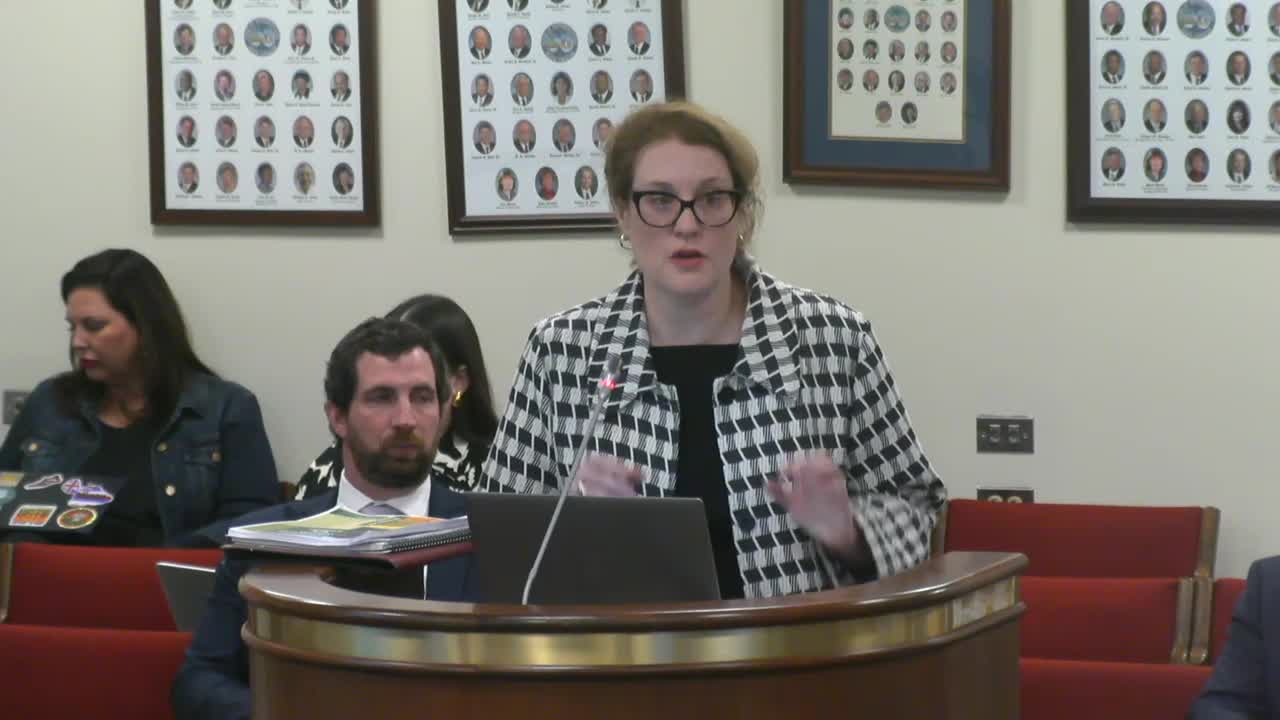South Carolina Education Oversight Committee evaluates course effectiveness for student achievement
April 29, 2025 | 2025 Legislative Meetings, South Carolina
This article was created by AI summarizing key points discussed. AI makes mistakes, so for full details and context, please refer to the video of the full meeting. Please report any errors so we can fix them. Report an error »

The House Labor, Commerce and Industry Committee's Banking and Insurance Subcommittee convened on April 29, 2025, to discuss various educational initiatives and their impact on student achievement in South Carolina. The meeting focused on the effectiveness of different course delivery methods and the historical context of educational reforms in the state.
The session began with a presentation on the evaluation of course delivery methods, specifically comparing face-to-face, online, and hybrid formats. The findings from the previous year indicated that face-to-face instruction yielded better student achievement results. The committee plans to repeat this evaluation to further assess the effectiveness of these delivery methods.
A historical overview was provided, highlighting the establishment of the PASS Commission by Governor David Beasley in 1997. This initiative arose from concerns within the business community regarding the preparedness of high school graduates for the workforce and post-secondary education. The PASS Commission's report led to the formation of the Education Oversight Committee (EOC) in 1998, which has since played a crucial role in educational accountability in South Carolina.
The EOC is noted for its unique composition, bringing together educators, policymakers, legislators, and business leaders to collaboratively discuss and improve education. This collaborative approach is relatively rare among states, with Kentucky being one of the few with a similar initiative, albeit privately funded.
The committee emphasized South Carolina's leadership in the standards and accountability movement, particularly through the "Profile of the South Carolina Graduate." This framework, established in 2016 but developed in 2012, outlines the skills and characteristics that students should possess upon graduating high school. It reflects a joint vision supported by various stakeholders, including school administrators and the business community.
The meeting concluded with a commitment to continue monitoring educational outcomes and refining strategies to enhance student readiness for future challenges. The next steps will involve further data collection and analysis to inform ongoing educational reforms in the state.
The session began with a presentation on the evaluation of course delivery methods, specifically comparing face-to-face, online, and hybrid formats. The findings from the previous year indicated that face-to-face instruction yielded better student achievement results. The committee plans to repeat this evaluation to further assess the effectiveness of these delivery methods.
A historical overview was provided, highlighting the establishment of the PASS Commission by Governor David Beasley in 1997. This initiative arose from concerns within the business community regarding the preparedness of high school graduates for the workforce and post-secondary education. The PASS Commission's report led to the formation of the Education Oversight Committee (EOC) in 1998, which has since played a crucial role in educational accountability in South Carolina.
The EOC is noted for its unique composition, bringing together educators, policymakers, legislators, and business leaders to collaboratively discuss and improve education. This collaborative approach is relatively rare among states, with Kentucky being one of the few with a similar initiative, albeit privately funded.
The committee emphasized South Carolina's leadership in the standards and accountability movement, particularly through the "Profile of the South Carolina Graduate." This framework, established in 2016 but developed in 2012, outlines the skills and characteristics that students should possess upon graduating high school. It reflects a joint vision supported by various stakeholders, including school administrators and the business community.
The meeting concluded with a commitment to continue monitoring educational outcomes and refining strategies to enhance student readiness for future challenges. The next steps will involve further data collection and analysis to inform ongoing educational reforms in the state.
View full meeting
This article is based on a recent meeting—watch the full video and explore the complete transcript for deeper insights into the discussion.
View full meeting